41 indexing using labels in dataframe
Pandas Dataframe Index in Python - PythonForBeginners.com When a dataframe is created, the rows of the dataframe are assigned indices starting from 0 till the number of rows minus one. However, we can create a custom index for a dataframe using the index attribute. To create a custom index in a pandas dataframe, we will assign a list of index labels to the index attribute of the dataframe. Multi-level Indexing in Pandas - Python Wife Using a multi-index we create a hierarchy of indices within the data. So, instead of date, we will pass in a list of strings. This will indicate to Pandas that we want all the column names to act as the index for our DataFrame. tech. set_index (['date', 'name'], inplace = True) The resultant DataFrame is a multi-index.
How to drop rows in Pandas DataFrame by index labels? Rows can be removed using index label or column name using this method. Syntax: DataFrame.drop (labels=None, axis=0, index=None, columns=None, level=None, inplace=False, errors='raise') Parameters: labels: String or list of strings referring row or column name. axis: int or string value, 0 'index' for Rows and 1 'columns' for Columns.

Indexing using labels in dataframe
DataFrame Indexing: .loc[] vs .iloc[] - Data Science Discovery Indexing Using a Single Label (Row and Column) For the iloc function, to find a specific cell, we can specify the row index (left) and column index (right) separated by a comma. # iloc function # note that the following code uses single brackets ( []). Double brackets ( [ []]) will retrieve rows between the specified integers. df.iloc[0,2] 10.5 Pandas DataFrame Indexing Explained: from .loc to .iloc and beyond Indexing can be described as selecting values from specific rows and columns in a dataframe. The row labels (the dataframe index) can be integer or string values, the column labels are usually strings. By indexing, we can be very particular about the selections we make, zooming in on the exact data that we need. Indexing Dataframes. Indexing Dataframes in Pandas | by Vidya Menon ... It is one of the most versatile methods in pandas used to index a dataframe and/or a series method.The loc () function is used to access a group of rows and columns by label (s) or a boolean array. loc [] is primarily label based, but may also be used with a boolean array. The syntax being:
Indexing using labels in dataframe. Tutorial: How to Index DataFrames in Pandas - Dataquest Label-based Dataframe Indexing As its name suggests, this approach implies selecting dataframe subsets based on the row and column labels. Let's explore four methods of label-based dataframe indexing: using the indexing operator [], attribute operator ., loc indexer, and at indexer. Using the Indexing Operator Boolean Indexing in Pandas - GeeksforGeeks In boolean indexing, we will select subsets of data based on the actual values of the data in the DataFrame and not on their row/column labels or integer locations. In boolean indexing, we use a boolean vector to filter the data. Boolean indexing is a type of indexing that uses actual values of the data in the DataFrame. Select Rows & Columns by Name or Index in Pandas DataFrame using ... The . loc [] function selects the data by labels of rows or columns. It can select a subset of rows and columns. There are many ways to use this function. Example 1: Select a single row. Python3 import pandas as pd employees = [ ('Stuti', 28, 'Varanasi', 20000), ('Saumya', 32, 'Delhi', 25000), ('Aaditya', 25, 'Mumbai', 40000), Label-based indexing to the Pandas DataFrame - GeeksforGeeks Indexing plays an important role in data frames. Sometimes we need to give a label-based "fancy indexing" to the Pandas Data frame. For this, we have a function in pandas known as pandas.DataFrame.lookup (). The concept of Fancy Indexing is simple which means, we have to pass an array of indices to access multiple array elements at once.
Drop columns in DataFrame by label Names or by Index Positions Method 3: Drop Columns from a Dataframe using loc [] and drop () method. Example: Remove all columns between a specific column name to another columns name. # and indices. Note: Different loc () and iloc () is iloc () exclude last column range element. Indexing and selecting data — pandas 1.5.1 documentation Indexing and selecting data # The axis labeling information in pandas objects serves many purposes: Identifies data (i.e. provides metadata) using known indicators, important for analysis, visualization, and interactive console display. Enables automatic and explicit data alignment. Allows intuitive getting and setting of subsets of the data set. Get Rows by their Index and Labels - Data Science Parichay You can use the pandas dataframe loc property to access one or more rows of a dataframe by their row labels. The loc property in a pandas dataframe lets you access rows and/or columns using their respective labels. The following is the syntax. # select row with label l df.loc[l] # select rows with labels l, m, and n df.loc[ [l, m, n]] Examples Pandas DataFrame Indexing Streamlined - Table of Contents In pandas data frames, each row also has a name. By default, this label is just the row number. However, you can set one of your columns to be the index of your DataFrame, which means that its values will be used as row labels. We set the column 'name' as our index. It is a common operation to pick out one of the DataFrame's columns to work on.
pandas.DataFrame.set_index — pandas 1.5.1 documentation Set the DataFrame index (row labels) using one or more existing columns or arrays (of the correct length). The index can replace the existing index or expand on it. Parameters. keyslabel or array-like or list of labels/arrays. This parameter can be either a single column key, a single array of the same length as the calling DataFrame, or a list ... Indexing in Pandas Dataframe using Python | by Kaushik Katari | Towards ... Indexing using .loc method. If we use the .loc method, we have to pass the data using its Label name. Single Row To display a single row from the dataframe, we will mention the row's index name in the .loc method. The whole row information will display like this, Single Row information Multiple Rows Python Pandas: Get Index Label for a Value in a DataFrame I typically do the following using np.where: import numpy as np idx = df.index [np.where (df ['hair'] == 'blonde')] Which gives the expected result: Index ( [u'mary'], dtype='object') If you want the result in a list, you can use .tolist () method of index Share Follow answered Jun 14, 2017 at 15:28 FLab 6,816 3 34 63 Add a comment Your Answer Pandas DataFrame Indexing: Set the Index of a Pandas Dataframe Python list as the index of the DataFrame In this method, we can set the index of the Pandas DataFrame object using the pd.Index (), range (), and set_index () function. First, we will create a Python sequence of numbers using the range () function then pass it to the pd.Index () function which returns the DataFrame index object.
Change column names and row indexes in Pandas DataFrame - GeeksforGeeks Now, if we want to change the row indexes and column names simultaneously, then it can be achieved using rename () function and passing both column and index attribute as the parameter. df = df.rename (index = lambda x: x + 5, columns = lambda x: x +'x') # increase all the row index label by value 5. # append a value 'x' at the end of each ...
Indexing and Selecting Data with Pandas - GeeksforGeeks Pandas support four types of Multi-axes indexing they are: Dataframe. [ ] ; This function also known as indexing operator Dataframe.loc [ ] : This function is used for labels. Dataframe.iloc [ ] : This function is used for positions or integer based Dataframe.ix [] : This function is used for both label and integer based
Indexing Dataframes. Indexing Dataframes in Pandas | by Vidya Menon ... It is one of the most versatile methods in pandas used to index a dataframe and/or a series method.The loc () function is used to access a group of rows and columns by label (s) or a boolean array. loc [] is primarily label based, but may also be used with a boolean array. The syntax being:
Pandas DataFrame Indexing Explained: from .loc to .iloc and beyond Indexing can be described as selecting values from specific rows and columns in a dataframe. The row labels (the dataframe index) can be integer or string values, the column labels are usually strings. By indexing, we can be very particular about the selections we make, zooming in on the exact data that we need.
DataFrame Indexing: .loc[] vs .iloc[] - Data Science Discovery Indexing Using a Single Label (Row and Column) For the iloc function, to find a specific cell, we can specify the row index (left) and column index (right) separated by a comma. # iloc function # note that the following code uses single brackets ( []). Double brackets ( [ []]) will retrieve rows between the specified integers. df.iloc[0,2] 10.5
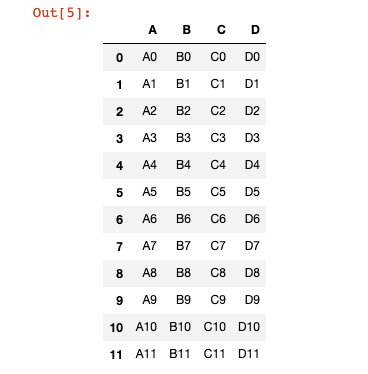




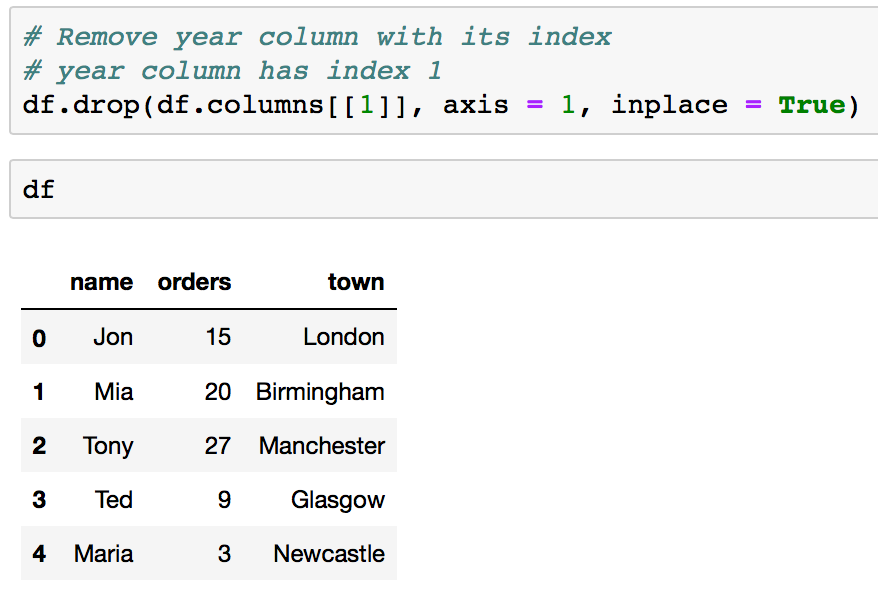
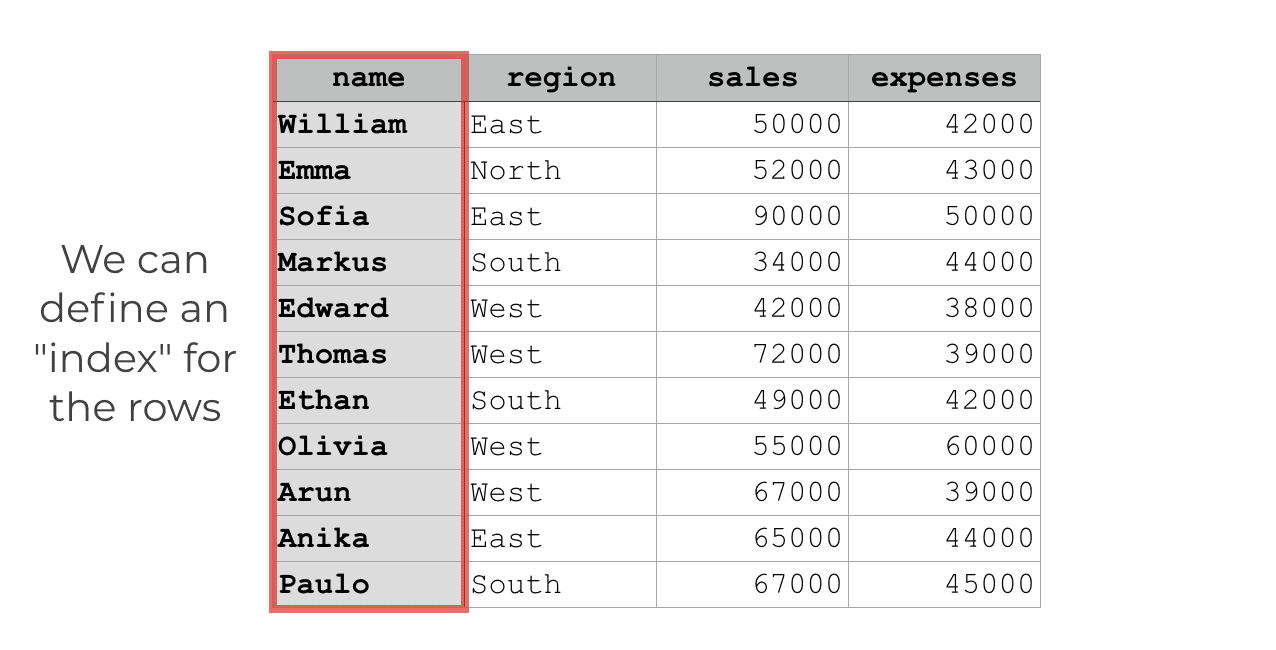
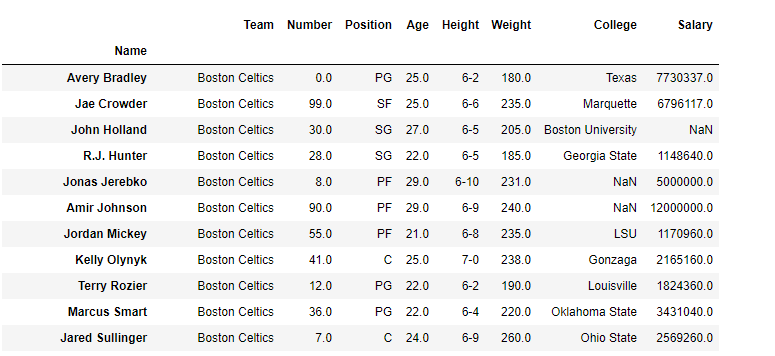
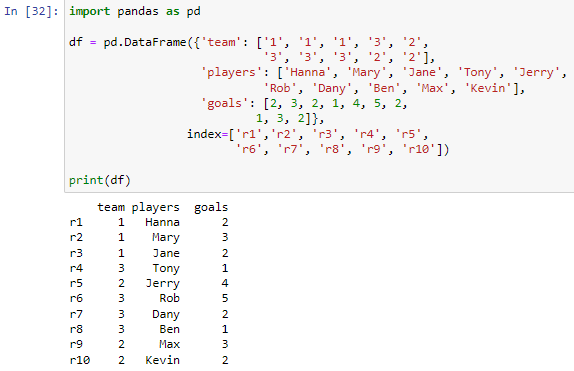
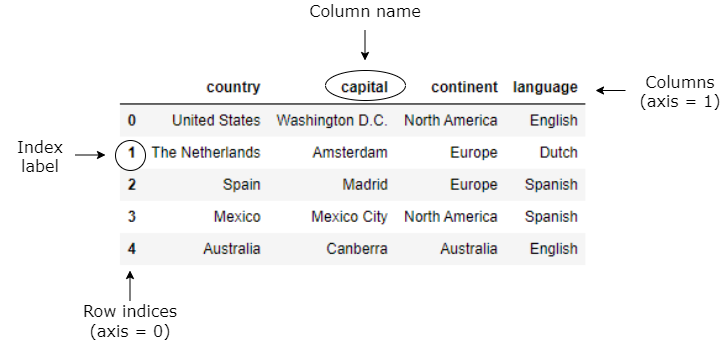





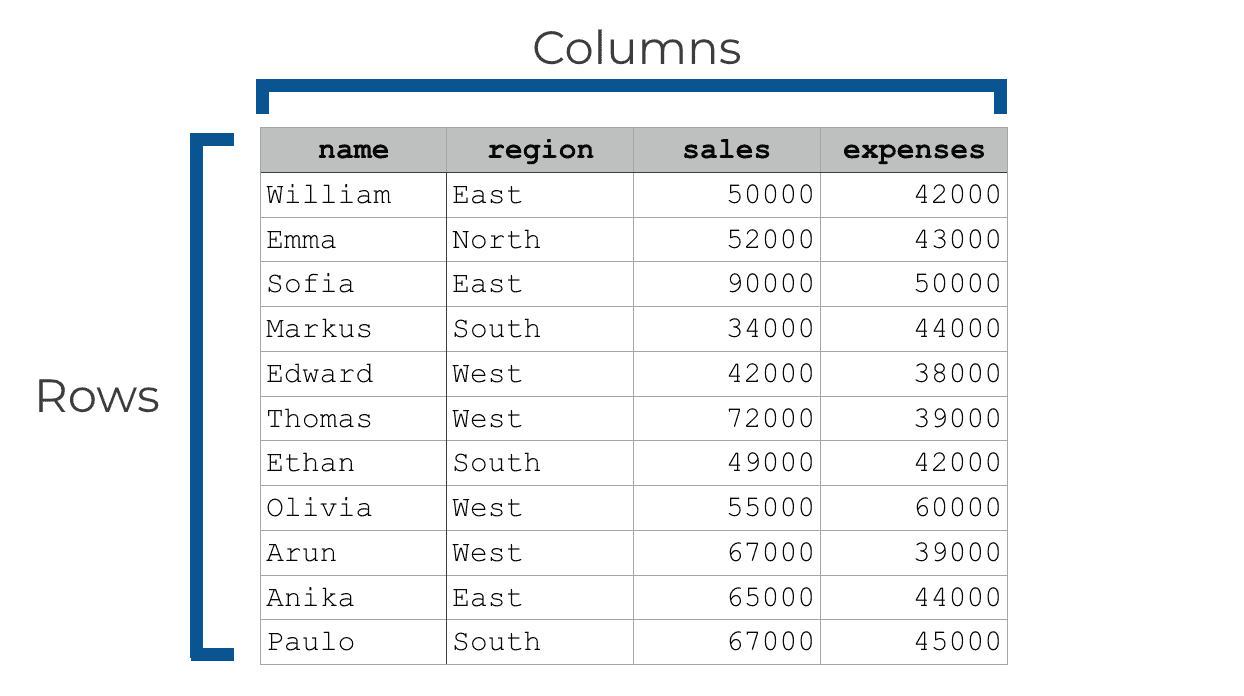



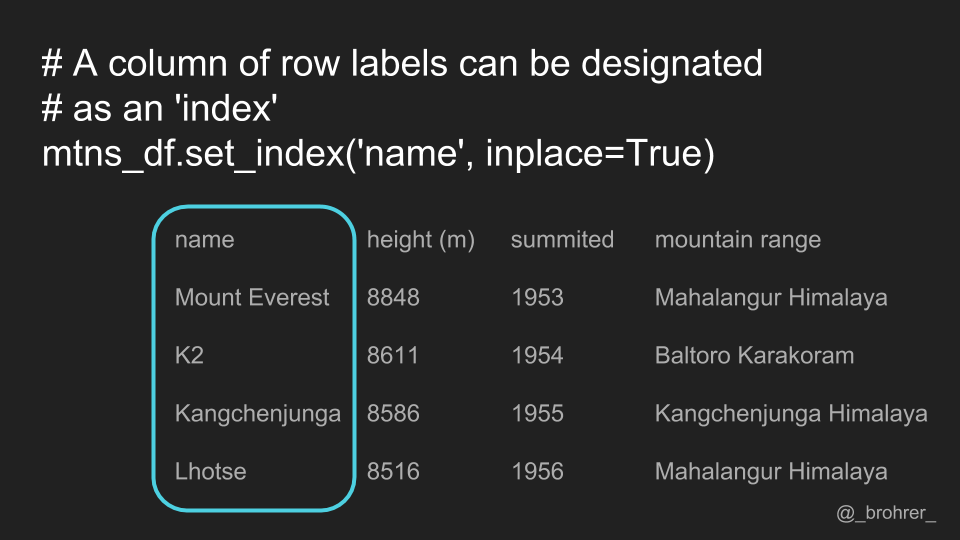
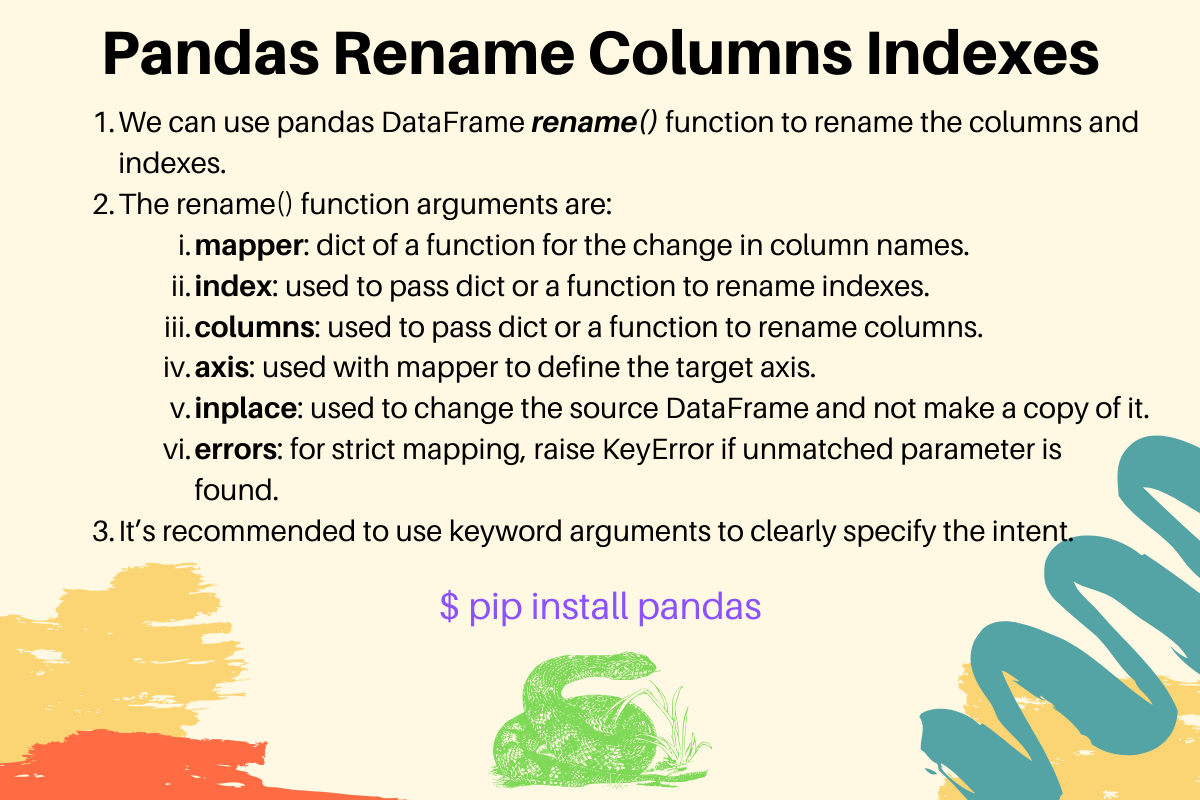





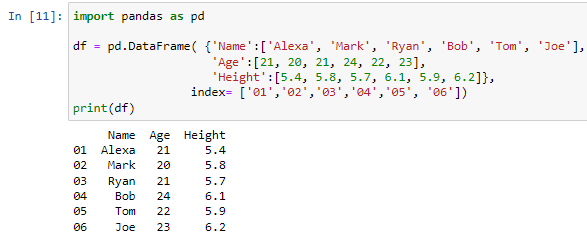



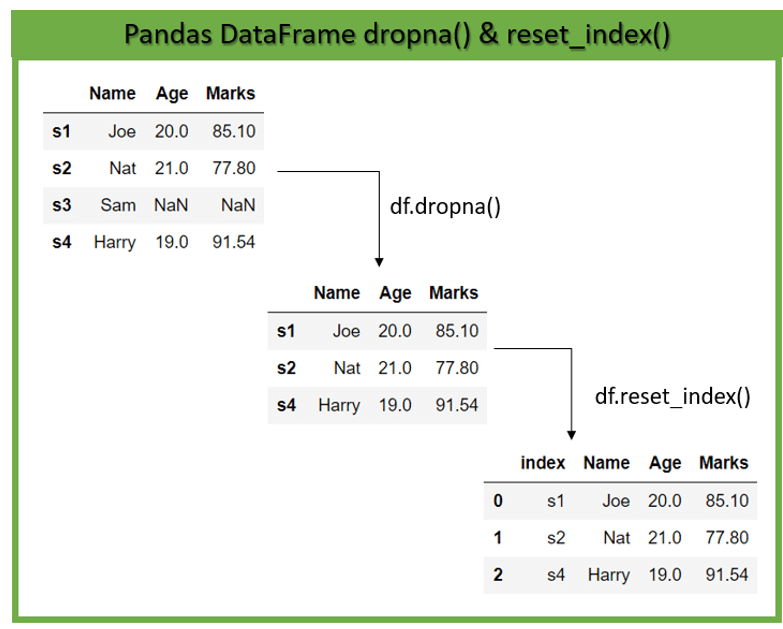


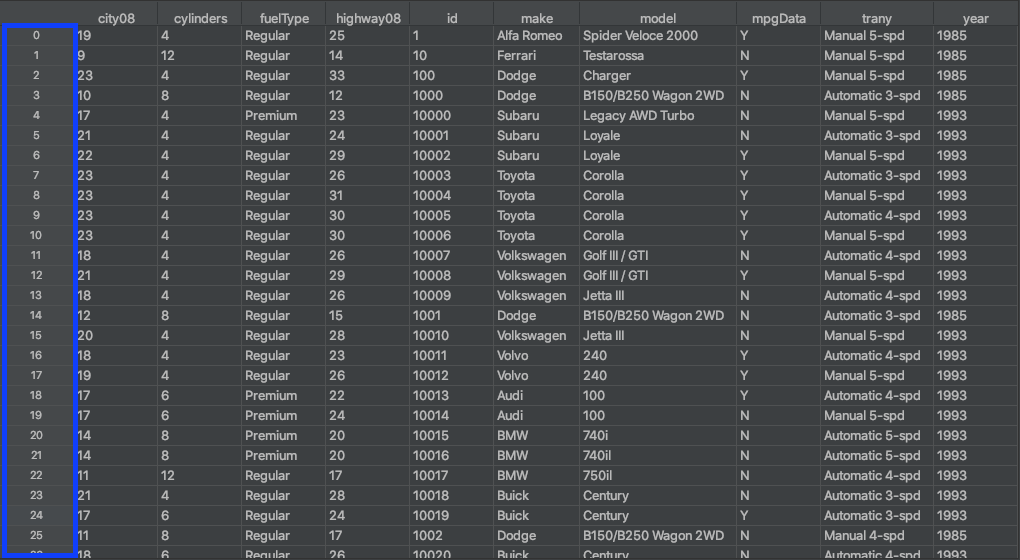

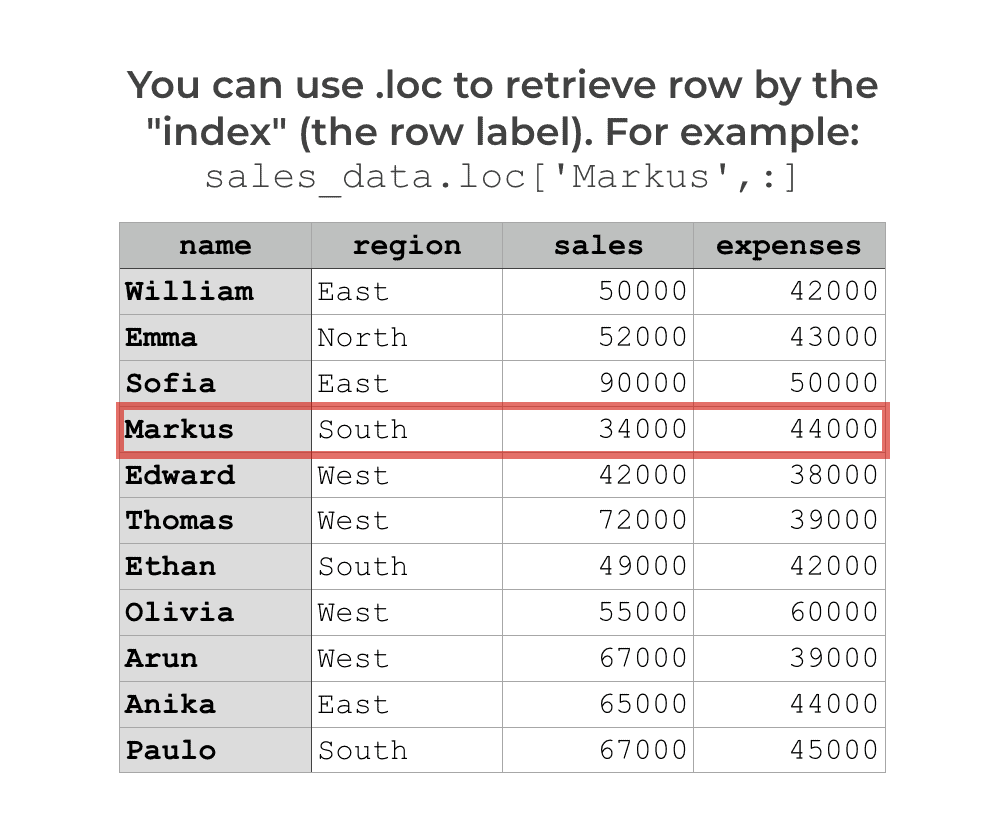

Post a Comment for "41 indexing using labels in dataframe"